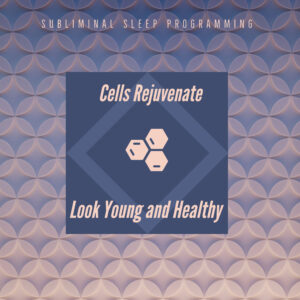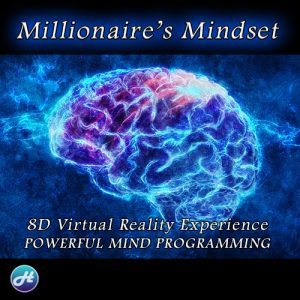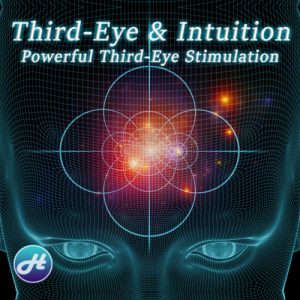J.S. Antrobus, E.J. Wamsley, in Encyclopedia of Neuroscience, 2009
Lucid Dreaming
Opposing this hallucinatory, defining characteristic of REM dreams is the relatively infrequent phenomenon of ‘lucid’ dreams, whereby the ‘sleeper’ reports being aware that he/she is dreaming, and in some cases is able to deliberately modify the events of his/her ongoing dream. Lucid dreams are commonly reported from the final hours of morning sleep. The phenomenon suggests that the hallucinatory characteristic of dreamlike mentation may have a neurological basis different from that of other properties. Circadian-driven reticular formation/cortical circuits may not produce the deafferentation associated with the REM/NREM cycles, so that sensory, including proprioceptive, thresholds are lower than in earlier REM periods. These lower thresholds may allow the lucid dreamer to process stimuli that identify the external world and distinguish it from the internal dream experience, thereby producing the experience of ‘knowing’ that one is dreaming.
View chapterPurchase book
J.S. Antrobus, E.J. Wamsley, in Reference Module in Neuroscience and Biobehavioral Psychology, 2017
Lucid Dreaming
Opposing this hallucinatory, defining characteristic of REM dreams is the relatively infrequent phenomenon of “lucid” dreams, where by the “sleeper” reports being aware that he/she is dreaming, and in some cases is able to deliberately modify the events of his/her ongoing dream. Lucid dreams are commonly reported from the final hours of morning sleep. The phenomenon suggests that the hallucinatory characteristic of dreamlike mentation may have a neurological basis different from that of other properties. Circadian-driven reticular formation/cortical circuits may not produce the deafferentation associated with the REM/NREM cycles, so that sensory, including proprioceptive, thresholds are lower than in earlier REM periods. These lower thresholds may allow the lucid dreamer to process stimuli that identify the external world and distinguish it from the internal dream experience, thereby producing the experience of “knowing” that one is dreaming. Alternatively, recent evidence has been proposed to demonstrate that the increased activation of prefrontal cortex regions enables the insight characteristic of lucid dreaming (Voss et al., 2009).
View chapterPurchase book
Martin Dresler, … Victor I. Spoormaker, in Principles and Practice of Sleep Medicine (Sixth Edition), 2017
Prevalence and Induction Methods
Generally, lucid dreaming is quite rare. Only one half of the general population know the phenomenon from personal experience, approximately 20% have lucid dreams on a monthly basis, and only a minority of approximately 1% have lucid dreams several times a week.18,19 Some differences across different populations and cultures seem to exist—for example, German students reported a much higher lucid dream frequency than Japanese students,20,12 and even when representative population samples are surveyed, Germans report more lucid dreams than Austrians.19,21 Also, age-related differences in lucid dreaming prevalence have been recognized, with young children and adolescents reporting lucid dreams more frequently than adults.22,17
Quite often, lucid dreaming spontaneously emerges from nightmares, recurrent dreams, or some peculiarities within a dream. However, lucid dreaming also can be intentionally induced by applying various induction or relaxation techniques, by engaging with topics of dreaming and lucid dreaming, and with use of other deliberate training strategies.23,24 Sleep-specific circumstances, such as short awakening in the morning or an afternoon nap, as well as stress also can initiate the first lucid dream experience.17
Since the onset of lucid dream research, possible induction techniques have always been a pertinent concern. A plethora of strategies to induce lucid dreams have been suggested in the literature, which can be loosely classified into three broad categories: cognitive techniques, external stimulation, and miscellaneous.25 The first category encompasses all cognitive activities that are carried out to increase the likelihood of achieving lucidity in a dream state. For this category, a large number of different methods have been suggested that can be further divided into methods whereby lucidity is initiated from within a dream, so that the person becomes lucid during a dream (dream-initiated lucid dreaming), and methods whereby lucidity is initiated from wakefulness, so that the person retains conscious awareness when falling asleep (wake-initiated lucid dreaming). The rationale behind the second category is that an external stimulus presented to a sleeping person can be incorporated into the dream (e.g., spraying water on the sleeping person’s face may promote the incorporation of sudden rainfalls in the dream) and that the incorporated stimuli serve as a cue to remind the dreamer about being in the dream state (e.g., someone squirting water signals the dreamer that he or she is dreaming) and thereby triggers dream lucidity.26 The third category includes miscellaneous aids to gain lucidity, such as drugs (e.g., Donepezil) but also specific practices involving sleep-wake patterns—for example, waking up in early-morning hours and then, after a certain period, going back to bed to take a nap, known as wake-back-to-bed (WBTB).27 WBTB is not a technique per se, because it was empirically tested only in combination with other techniques (mnemonic induction of lucid dreams [MILD]) and may boost their efficacy.
Most lucidity induction strategies described in the literature are based on personal and anecdotal accounts. A recent systematic review of evidence found 27 studies that experimentally tested the efficacy of lucidity induction techniques,25 of which 5 were conducted as sleep laboratory studies and the other 22 were done as field experiments, in some cases with low methodologic quality. None of the induction techniques was verified to induce lucid dreams reliably, consistently, and with a high success rate; some methods, however, proved to be promising—for example, the MILD/WBTB combination. More recently, noninvasive brain stimulation methods yielded encouraging results. Although transcranial direct current stimulation of the dorsolateral prefrontal cortex during REM sleep showed rather modest success in inducing dream lucidity as assessed by the eye signaling technique,27 transcranial alternating current stimulation in the low gamma range (25 Hz and 40 Hz) led to a robust increase in retrospectively reported dream lucidity as measured by the Lucidity and Consciousness in Dreams questionnaire.28
View chapterPurchase book
Benjamin Baird, … Martin Dresler, in Handbook of Behavioral Neuroscience, 2019
VII Non-Clinical Applications of Lucid Dreaming
Lucid dreaming not only has applications in clinical domains but also has the potential to enrich the lives of healthy people. Indeed, many lucid dreamers report that they have used lucid dreams to positively influence their waking life (Schädlich & Erlacher, 2012). Two examples for which preliminary scientific data are available are creative problem-solving and practicing motor skills.
Anecdotal reports on scientific discovery, inventive originality, and artistic productivity suggest that creativity can be triggered or enhanced by dreaming. Several experimental studies also suggest that REM sleep dreaming can improve creativity during the waking state (Cai, Mednick, Harrison, Kanady, & Mednick, 2009; Dresler, 2012). Theoretically, sleep has been suggested to provide an ideal state for creative incubation: the internally generated dream narrative and absence of external sensory data lead to a much more radical renunciation from unsuccessful problem-solving attempts, leading to coactivations of cognitive data that are highly remote in waking life. Furthermore, both dreaming and creativity have been characterized with primary process thinking, flat associative hierarchies, and defocused attention. In contrast to the more random flow of nonlucid dream narratives, dream lucidity allows for a more goal-oriented use of these creativity-related dream characteristics. Consistent with this, one study reported that frequent lucid dreamers are more successful in an insight-based problem-solving task (Bourke & Shaw, 2014). Surveys among lucid dreamers also suggest that lucid dreaming can be used to improve creative thinking and problem-solving (Schädlich & Erlacher, 2012; Stumbrys & Daniels, 2010). More research is needed to follow up these results and to further explore the potential of lucid dreaming for creativity and problem-solving.
Motor practice during lucid dreaming is another potential application of lucid dreaming, which may be conceived of as a novel type of mental rehearsal in which a person uses the dream state to consciously practice specific tasks. It can be compared with mental practice, which is well established in sport theory and sport practice (Driskell, Copper, & Moran, 1994). For both mental and dream rehearsal, movements are simulated with an imagined body on a purely cognitive level, whereas the physical body remains still. One advantage that lucid dreaming has over both mental practice and modern virtual reality simulators is that lucid dreaming offers the potential for practice with all kinesthetic sensations of the dream body in an environment that is experienced with as much vividness and realism as would be encountered in waking experience. In addition, the lucid dreamer, being limited only by his or her imagination and attentional stability, has far greater potential for control over his or her own body, actions, and environment than in mental rehearsal, virtual reality environments, or waking life. In contrast to the vast amount of research on mental practice, however, empirical data on practice in lucid dreams are rather sparse.
In several anecdotal reports, amateur and professional athletes indicated that they used lucid dreams to improve their waking performance in domains such as long distance running, tennis, skating, alpine skiing, or martial arts (LaBerge & Rheingold, 1990; Schädlich & Erlacher, 2018; Tholey, 1990). In a systematic questionnaire study, 840 German athletes from a variety of sports were surveyed about their experiences with lucid dreams (Erlacher, Stumbrys, & Schredl, 2012). The study found that approximately every 10th athlete who had lucid dreams (5% of the total sample) used lucid dreams to practice sports skills, with most of them having the impression that this mental practice improved their performance.
Few studies have tested the effects of practice in lucid dreams experimentally. In a qualitative study, subjects performed different complex sport skills familiar to them in waking life, like skiing or gymnastics, in their lucid dreams (Tholey, 1981). Participants reported that they had no difficulties performing these sport skills in their lucid dreams and that their movements improved in both the dream and the waking state. In a quasi-experimental pre-post design study, participants were asked to practice a coin-tossing task in their lucid dreams (Erlacher & Schredl, 2010). Results showed a significant increase in hitting the target from pretest to post test for the group, which practiced the coin-tossing task in their lucid dreams, but no increase was found for the control group. More recently, these results were replicated with a different motor task (sequential finger tapping) (Stumbrys, Erlacher, & Schredl, 2016). Improvements following lucid dream practice seem to be similar or slightly lower as compared with actual physical practice and similar or slightly better to mental practice in wakefulness (Stumbrys et al., 2016). Interestingly, the efficacy of motor practice during lucid dreaming might be related on the amount of distractions during dreamed rehearsal (Schädlich, Erlacher, & Schredl, 2017).
While we have focused our brief discussion here on the domains of creativity and rehearsal of physical skills, as these are the areas with some preliminary data, the research to date has likely only begun to scratch the surface of the potential applications of lucid dreaming. Indeed, it is reasonable to state that we likely do not yet realize the potential of making sleep and dreaming accessible to our unique form of self-aware consciousness. For instance, in line with the brief remarks above on the potential for creativity enhancement, we have been intrigued by the potential use of lucid dreaming in the humanities and arts, such as painters and musicians who have reported using lucid dreams to compose paintings or musical scores, which they then transcribe to the palette or page upon awakening. Overall, we might therefore regard lucid dreaming as a new domain for exploration, while remaining open to the potential applications and insights we might discover. Indeed, perhaps, the largest potential of this state is that it provides a unique method to explore consciousness, which is one of the largest gaps in our scientific understanding of nature.
View chapterPurchase book
Katja Valli, Antti Revonsuo, in Reference Module in Neuroscience and Biobehavioral Psychology, 2019
Absent or Rare Dream Content
The ability to reflect on the true nature of dream events, that is, state-logic, is flawed during dreaming. In dreams, we lack insight, take for granted the reality of dreams and fail to understand its hallucinatory characteristic (except in lucid dreams). This may be explained by the specific pattern of brain activation during REM sleep: the dorsolateral prefrontal cortex where self-awareness is believed to reside is very active during wakefulness, but much less active in REM sleep (e.g., Maquet et al., 1996).
There are also some specific dream contents that are very rare compared to corresponding waking activities. These include such activities as reading, writing, calculating, and using a computer (Hartmann, 2000; Schredl and Hofmann, 2003). The rare occurrence of these dream contents seem striking, as they are activities that we engage in daily, sometimes several hours a day. Thus far, there is no all-exclusive explanation as to why elements so frequent in our waking lives do not enter our dreams.
View chapterPurchase book
T.T. Dang-Vu, … P. Maquet, in Encyclopedia of Consciousness, 2009
Lucid Dreaming
A particular type of ‘dream’ deserves special attention, because it belongs to an area between dreaming and consciousness. The so-called ‘lucid dreaming’ does not follow the general definitions and properties of dreams, cited heretofore. The existence of lucid dreaming is even controversial and not widely accepted.
The minimal definition of a lucid dream is a dream in which the subject is conscious that he/she is dreaming. Several additional criteria may also characterize lucid dreaming. The dreamer keeps normal reasoning and decision faculties, similar to normal waking. He/she can remember his dream after awakening. He/she can interpret the dream while dreaming. And finally he/she can control the dream and its sequence of events. Not only can the lucid dreamer exert control over his/her own actions, but he/she can also decide to interact with the environment, the characters and the course of dream. The ability to perform a lucid dream is believed to vary between individuals and between nights in a same individual. Lucid dreams are classified into two types according to their onset. The first category is named dream-initiated lucid dreams and concerns lucid dreams in which subjects become conscious of their dream in the course of a current dream state. The second category is called wake-initiated lucid dreams for those lucid dreams in which the dreamer consciously enters a lucid dream from the state of wakefulness.
Lucid dreaming may be facilitated after specific training. For instance, self-suggestion and posthypnotic suggestion techniques have been developed in order to induce lucidity during dreams. One of those techniques is the mnemonic induction of lucid dreams method: the subject wakes up in the morning, stays awake for about 45 min and, prior to going back to sleep, is then trained to remember being conscious in the next dream using self-suggestion methods. Recently, other methods of induction based on external stimulation (sound, light, vibration) have been developed. These methods are based on the assumption that external stimuli delivered during REM sleep can be integrated within the dream experience in order to help the subject to realize that he/she is currently dreaming.
Some data suggest that most people experience lucid dreaming, although very fleetingly in some cases. The frequency of lucid dream in the population is actually highly variable across studies (between 26% and 82%), possibly because of methodological differences between these studies. Age may also influence the frequency of lucid dreaming. In comparison to usual dreams, lucid dreams are more emotionally charged. Most lucid dreams are experienced during REM sleep and the last hours of sleep night. They are also frequent during naps. Certain reports mention lucid dreams in non-REM sleep stages.
The neurobiological basis of lucid dreaming is largely unknown. It has been hypothesized that lateral prefrontal cortices, deactivated during natural REM sleep, would remain activated during lucid dreaming. Unlike usual dreams, lucid dreams would benefit from the persistence of prefrontal control on multiple cognitive processes, accounting for the conscious awareness of the current dream and the ability to control the sequence of events. The prefrontal activation hypothesis still needs experimental confirmation.
Finally, a potential application of lucid dreaming in clinical practice is the treatment of pathological nightmares and phobia, by intentionally altering dream content. Lucid dreaming is also used for spiritual and recreational purposes.
View chapterPurchase book
Dylan Smith, … Thien Thanh Dang-Vu, in Reference Module in Neuroscience and Biobehavioral Psychology, 2017
Lucid Dreaming
A particular type of “dream” deserves a special attention, because it belongs to an area between dreaming and consciousness. The so-called “lucid dreaming” does not follow the general definitions and properties of dreams, cited heretofore. The existence of lucid dreaming is even controversial and not widely accepted.
The minimal definition of a lucid dream is a dream in which the subject is conscious that he/she is dreaming. Several additional criteria may also characterize lucid dreaming. The dreamer keeps normal reasoning and decision faculties, similar to normal waking. He/she can remember his dream after awakening. He/she can interpret the dream while dreaming. Sometimes, he/she can control the dream and its sequence of events, exert control over his/her own actions and can also decide to interact with the environment, the characters and the course of dream. The ability to perform a lucid dream is believed to vary between individuals and between nights in a same individual. Lucid dreams are classified in two types according to their onset. The first category is named DILD (dream-initiated lucid dreams) and concerns lucid dreams in which subjects become conscious of their dream in the course of a current dream state. The second category is called WILD (wake-initiated lucid dreams) for those lucid dreams in which the dreamer consciously enters a lucid dream from the state of wakefulness.
Lucid dreaming may be facilitated after specific training. For instance, self-suggestion and post-hypnotic suggestion techniques have been developed in order to induce lucidity during dreams. One of those techniques is the MILD method (Mnemonic Induction of Lucid Dreams): the subject wakes up in the morning, stays awake for about 45 min and, prior to going back to sleep, is then trained to remember being conscious in the next dream using self-suggestion methods. Other methods of induction based on external stimulation (sound, light, vibration) have been developed. These methods are based on the assumption that external stimuli delivered during REM sleep can be integrated within the dream experience in order to help to the subject to realize that he/she is currently dreaming.
Some data suggest that most people experience lucid dreaming, although very fleetingly in some cases. The frequency of lucid dream in the population is actually highly variable across studies (between 26% and 82%), possibly because of methodological differences between these studies. Age may also influence the frequency of lucid dreaming. In comparison to usual dreams, lucid dreams are more emotionally charged. Most lucid dreams are experienced during REM sleep and the last hours of sleep night. They are also frequent during naps. Certain reports mention lucid dreams in non-REM sleep stages.
The neurobiological basis of lucid dreaming is largely unknown. It has been hypothesized that lateral prefrontal cortices, deactivated during natural REM sleep, would remain activated during lucid dreaming. Unlike usual dreams, lucid dreams would benefit from the persistence of prefrontal control on multiple cognitive processes, accounting for the conscious awareness of the current dream and the ability to control the sequence of events. Indeed, a case study utilized fMRI in order to assess neural activation during a lucid dream, and found increased activation (compared to non-lucid REM sleep) in the right dorsolateral prefrontal cortex, as well as the precuneus; a brain region associated with self-referential processing.
EEG recordings during sleep have shown an association between subjective ratings of dream lucidity and brain activity in the lower gamma band (40 Hz), localized in frontal and temporal regions (Vos et al., 2009). Interestingly, this frequency band is historically associated with conscious awareness and executive function. Indeed, the application of transcranial alternating current stimulation (tACS) in the lower gamma frequency band increased the probability of lucid dreaming, with 77% of test subjects reporting features of lucidity in their dreams after 2 min of stimulation.
Finally, a potential application of lucid dreaming in clinical practice is the treatment of pathological nightmares and phobia, by intentionally altering dream content. Lucid dreaming is also used for spiritual and recreational purposes.
View chapterPurchase book
A. Revonsuo, in Encyclopedia of Consciousness, 2009
Lucid Dreaming
Lucid dreaming is primarily a higher cognitive state of consciousness. Sleep laboratory studies have confirmed that lucid dreaming takes place during REM sleep. The defining feature of lucidity is the cognitive realization or reflective consciousness of the fact that ‘This is a dream!’ When this realization takes place, the dream changes from an ordinary one to a lucid dream, and lucidity lasts as long as the dreamer is aware of the fact that he or she is dreaming. Lucidity is like an awakening within the dream, possessing the revelatory knowledge that the whole world around me right now is unreal or hallucinatory, none of the objects or persons around me really exist, they are mere inventions of my dreaming mind.
Although the defining feature of this higher state is cognitive in that it constitutes of possessing knowledge that one ordinarily does not have during dreaming (lucid dreams have also been called ‘dreams of knowledge’), there are also attentional and emotional components to this state. Once lucidity ensues, the dreamer can deliberately pay attention to features of the dream world, make deliberate plans of action and carry them out within the dream, or explicitly recall the facts of waking life from long-term memory.
The ability to carry out deliberate and even preplanned actions was the key to the laboratory studies in which it was shown that lucidity occurs during continuous REM sleep; no disruption of sleep or brief awakening is involved. Highly trained lucid dreamers are able to give preplanned eye-movement signals in the dream when lucid. The eye-movement recordings show that these incontestable objective signs of lucidity are clearly recognizable and that the EEG at the same time was typical of uninterrupted REM sleep.
The heightened attentional state in lucid dreaming is often accompanied by a heightened realism of the dream world where the sensory–perceptual features seem almost unnaturally vivid, clear, radiating, and beautiful. Emotionally, lucid dreaming is often characterized by a positive tone, a feeling of full control, freedom and well-being, sometimes even elation.
Although many people may have been briefly lucid during dreaming, for most people lucidity happens only very rarely, if ever. In dream samples, lucidity occurs on average only in one or a few dream reports out of a hundred. Only about 20% of people report having lucid dreams at least once per month. However, lucidity is a learnable skill and various training programs and tips exist that increase the probability of becoming lucid. These include frequent reality testing while awake (asking yourself frequently during the day: Is this a dream?), paying attention to impossible oddities and bizarre features of the dream world which reveal that it must be a dream, and reminding oneself before going to sleep of the intention to become lucid. Also technical devices exist that give signals (a flashing red light, for example) to the dreamer in REM sleep that are supposed to be perceived within the dream without waking up the dreamer. The signal is expected to intrude into the dream and be noticed by the dreamer (why is the world suddenly flashing in red?). This is supposed to immediately lead to the realization by the dreamer that ‘This is a dream!’
View chapterPurchase book
Francesca Siclari, Giulio Tononi, in The Neurology of Conciousness (Second Edition), 2016
Reduced Voluntary Control and Reflective Thought
During dreaming there is a prominent reduction of voluntary control, whether of action, thought, or attention. With the exception of lucid dreaming (see below), the dreamer has no control over what he is going to dream, and is largely a passive spectator. Reflective thought processes are also impaired in characteristic ways. Again with exception of lucid dreams, dreaming is almost always delusional, in the sense that events and characters in the dream are taken for real. While the dreamer experiences thoughts, there is a severe impairment of the ability to pursue goals effectively, to analyze situations intelligently, to question assumptions, to reason properly, and to make appropriate decisions. For example, holding contradictory beliefs is quite common in dreams, and a dreamer easily accepts impossible events or situations, such as flying. There is often uncertainty about orientation in space (where one is in the dream), about time (when the dream is taking place in personal history), and person (confusion about the gender, age, and identity of dream characters). When dreaming, one cannot stop and reflect rationally on what one should be doing, nor imagine other scenarios (after all, one is already imagining the dream). Once again, these characteristics of dreaming consciousness are consistent with neuroimaging findings: dorsolateral prefrontal cortex, which is involved in volitional control and self-monitoring, is especially deactivated during REM sleep (Braun et al., 1997; Maquet et al., 1996).
View chapterPurchase book

















